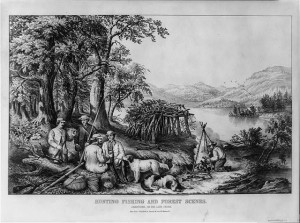Continuing with our unusual laws series, we turn to Tudor Vermin Acts. These acts allowed officials to hinder the growth of vermin by placing a bounty on nuisance animals, creating an incentive for private citizens to take it upon themselves to eradicate what were believed to be agricultural pests.
Since the United States inherited its common law system from the United Kingdom, it is unsurprising that many of these Vermin Acts inspired the laws of various states. The 1799 version of the Laws of Maryland contained an act titled, “An Act to encourage the destroying of wolves, crows, and squirrels 1728 Md. Laws Ch. VII.” In part, the act required each person to produce three squirrels or crows in “proportion to their taxables,” and authorized a bounty paid in the form of two pounds of tobacco for each additional squirrel or crow presented in excess of their assessment. Apparently the legislature anticipated that some may be stockpiling squirrels and crows, so the act required an oath be given that the squirrel or crow perished after the commencement of the act. In recognition of the fact that Quakers could not take such an oath, the legislature allowed Quakers to make an affirmation rather than an oath.
While the existence of these laws might be expected given our common law heritage and the agrarian nature of the early American economy, what may be surprising is that in some states, these laws are still in force. Well into the 20th century, New Hampshire and Pennsylvania authorized bounties for porcupines. Until the year 2000, Michigan authorized bounties for several animals, including rats. In order to claim a reward under these laws, the claimant was required to present the rat’s head to the clerk of their township, village, or city. In Kentucky, KRS § 150.425 currently authorizes a bounty on beavers, allowing the fiscal court to adopt a resolution recognizing that the county beaver population has expanded to the point where it presents “a threat to the preservation of farmland, trees, and other property.” The fiscal court may then request the Department of Fish and Wildlife Resources to pay bounties of ten dollars per beaver tail.
While the motivation behind these laws is reasonably clear, experience teaches that these laws must be carefully crafted to avoid severe, unintended consequences. In the United Kingdom, some of the species listed in the original Tudor Vermin Acts were nearly rendered extinct when a bounty was placed upon them. In the U.S., some of the species once considered vermin now enjoy a protected status, and some states, such as California, now outlaw the authorization of a bounty by government officials on any animal.

